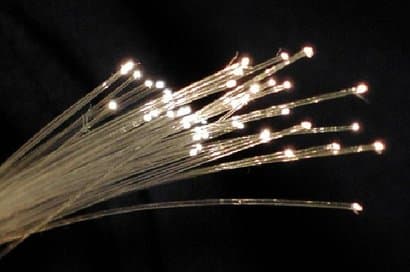New Data Transmission Record Set @ 255 Terabits/second
We've a new official data transmission record, an unthinkable 255 Terabits per second; about 21x more than what's available in the communication networks across the world. It's been just a few weeks since we informed you about the previous <a href="https://www.crazyengineers.com/threads/internet-43-tbps-a-new-world-record-in-data-transmission-has-been-set.76135">Internet @ 43 Tbps - A New World Record In Data Transmission Has Been Set!</a>, achieved by the Karlsruhe Institute Of Technology. The latest record breaker comes from the Eindhoven University of Technology (TU/e) from the Netherlands in association with the University Of Central Florida from USA. The research team working on the project has reported their achievement in the journal 'Nature Photonics'.
This awesomeness in Internet data transmissions comes from a special fibre cable, about 200 microns in diameter. It does not take more space than the traditional fibre cables which have already been deployed. The fibre has seven cores through which the light travels (current fibres have only one). Just to make it easier for everyone to understand - consider traffic on a one way road to that of a seven lane highway. The researchers introduced two more orthogonal dimensions for data transmission; as if each lane can carry three cars on the top of each other. Using these two methods, the engineers were able to achieve an overall data transportation throughput of about 255 Tb/s.

The world's already growing data hungry and desperately needs better, faster and more efficient ways of carrying data. The problem with current generation of fibre lines is that increasing the power of transmission signals introduces photonics nonlinear effects. It puts cap on the amount of data that can be transferred through the fibre cable (about 4-8 Terabits/seconds).
The research project, with support from European Union Framework 7, MODEGAP is now aiming for Petabits/second scale transmission. We definitely love the pace at which progress is being made and data transfer records are being broken. But the fact that this technology may take several years to reach your homes and offices may keep your excitement levels under check. Read more about the research on the source link below. Do let us know your thoughts.
Source: #-Link-Snipped-#
This awesomeness in Internet data transmissions comes from a special fibre cable, about 200 microns in diameter. It does not take more space than the traditional fibre cables which have already been deployed. The fibre has seven cores through which the light travels (current fibres have only one). Just to make it easier for everyone to understand - consider traffic on a one way road to that of a seven lane highway. The researchers introduced two more orthogonal dimensions for data transmission; as if each lane can carry three cars on the top of each other. Using these two methods, the engineers were able to achieve an overall data transportation throughput of about 255 Tb/s.

The world's already growing data hungry and desperately needs better, faster and more efficient ways of carrying data. The problem with current generation of fibre lines is that increasing the power of transmission signals introduces photonics nonlinear effects. It puts cap on the amount of data that can be transferred through the fibre cable (about 4-8 Terabits/seconds).
The research project, with support from European Union Framework 7, MODEGAP is now aiming for Petabits/second scale transmission. We definitely love the pace at which progress is being made and data transfer records are being broken. But the fact that this technology may take several years to reach your homes and offices may keep your excitement levels under check. Read more about the research on the source link below. Do let us know your thoughts.
Source: #-Link-Snipped-#
0
